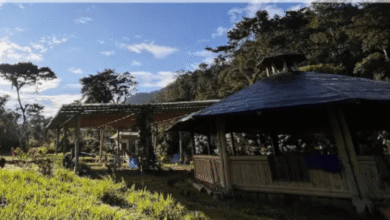
Exploring Kratom’s History and Cultural Significance in Southeast Asia
The story of kratom (Mitragyna speciosa) extends far beyond its recent popularity in Western markets. This remarkable botanical has deep roots in Southeast Asian cultures, where it has been utilized for centuries as part of traditional practices and social customs. While contemporary enthusiasts might associate kratom with modern wellness trends and premium kratom in Canada, understanding its rich historical context provides valuable perspective on this fascinating plant.
Ancient Origins and Traditional Knowledge
Archaeological evidence suggests that indigenous communities in Southeast Asia have been using kratom for at least 7,000 years. The earliest documented uses appear in Thailand, Malaysia, and Indonesia, where the tropical climate provides ideal growing conditions for the Mitragyna speciosa tree. Traditional knowledge about kratom’s properties was passed down through generations via oral traditions and practical applications.
In these regions, kratom became integrated into daily life through several key practices:
Traditional Medicine Systems
Long before modern scientific research, traditional healers recognized kratom’s potential applications. In various regional healing systems, kratom preparations were incorporated into remedies for common ailments. These applications varied by region and cultural tradition, with each developing unique preparation methods and usage protocols.
Thai traditional medicine, for example, documented kratom in ancient medical texts, where it was recommended for specific health concerns. Malaysian traditional healers developed their own approaches, often combining kratom with other local botanicals in complex formulations.
Agricultural Communities and Labor Practices
Among rural farming communities throughout Southeast Asia, kratom leaves became an integral part of agricultural life. Farmers and field workers would traditionally chew fresh kratom leaves during long days of strenuous labor. This practice was particularly common among rice farmers and rubber tappers, who worked under challenging conditions.
These agricultural workers reported that kratom helped them maintain stamina during extended periods of physical exertion and cope with the region’s intense heat and humidity. The practice became so ingrained in some communities that kratom trees were specifically cultivated near farming areas for easy access during workdays.
Social and Ceremonial Contexts
Beyond practical applications, kratom also held significant social and ceremonial importance in many communities. In southern Thailand, kratom tea was traditionally served at social gatherings, particularly among men in village settings. These gatherings functioned as important community bonding experiences where local news was shared and relationships strengthened.
In some regions, kratom played a role in coming-of-age ceremonies, wedding celebrations, and funeral rites. The specific customs varied widely across different ethnic groups and geographic areas, reflecting the diverse cultural landscape of Southeast Asia.
Regional Variations in Traditional Use
The traditional use of kratom varied significantly across different regions of Southeast Asia, with each area developing distinctive relationships with the plant:
Thailand
In Thailand, kratom has a particularly complex cultural history. Different regions developed unique preparation methods, with some communities favoring fresh leaf consumption while others created elaborate tea preparations. In southern Thailand, a preparation known as “4×100” became popular in certain social contexts, combining kratom tea with other local ingredients.
Thai musical traditions sometimes reference kratom, particularly in folk songs from rural southern regions. These cultural expressions reflect kratom’s integration into the social fabric of traditional communities.
Malaysia
Malaysian kratom traditions often emphasized specific harvesting techniques based on leaf maturity and seasonal factors. In certain Malaysian communities, kratom was incorporated into traditional healing practices that combined botanical knowledge with spiritual elements.
The Malaysian state of Kelantan developed particularly strong cultural associations with kratom, where specific preparation methods were considered regional specialties passed down through family lineages.
Indonesia
Indonesia’s archipelagic geography led to highly localized kratom traditions that varied from island to island. On Borneo (Kalimantan), indigenous Dayak communities incorporated kratom into both medicinal practices and social rituals. The island of Sumatra developed its own distinct kratom culture, with regional variations in harvesting and preparation techniques.
Indonesian kratom practices were often closely tied to specific ethnic groups, with knowledge transmitted through family connections and community structures rather than formal documentation.
Historical Documentation and Early Western Encounters
The first Western documentation of kratom came from Dutch colonial botanist Pieter Willem Korthals in 1839, who provided scientific descriptions of the plant while working in Indonesia. In 1897, H.G.A. Ridley documented local uses of kratom in the Malay Peninsula, noting its traditional applications among indigenous communities.
These early accounts often reflected colonial perspectives and limited understanding of the cultural contexts in which kratom was used. More comprehensive ethnobotanical documentation emerged in the mid-20th century, as researchers began interviewing traditional practitioners and documenting local knowledge systems more thoroughly.
Evolving Traditions in the Modern Era
Like many traditional practices, kratom use in Southeast Asia has evolved significantly in response to modernization, changing legal frameworks, and global influences. In some regions, traditional knowledge has been partially displaced by commercialization and changing social patterns.
However, many communities continue to maintain cultural connections to kratom. In rural areas particularly, traditional knowledge about harvesting methods, optimal growing conditions, and preparation techniques continues to be transmitted across generations. This living knowledge represents an important cultural heritage that connects contemporary practices to ancient traditions.
Preservation of Traditional Knowledge
Efforts to document and preserve traditional knowledge about kratom have increased in recent years. Ethnobotanical researchers are working with indigenous communities to record preparation methods, cultural contexts, and traditional understandings before this knowledge is lost to modernization.
These preservation efforts recognize that indigenous communities are the original stewards of kratom knowledge and seek to ensure that traditional perspectives are acknowledged alongside contemporary scientific research.
Contemporary Relevance of Historical Context
For modern enthusiasts interested in premium kratom in Canada, understanding this rich historical context provides valuable perspective. The traditional knowledge developed over centuries in Southeast Asia represents a profound legacy of human-plant relationships that continues to inform contemporary approaches.
By acknowledging this historical continuum, today’s kratom community can develop a more nuanced appreciation for the botanical they’re exploring—one that recognizes both modern applications and the deep cultural roots from which contemporary practices have emerged.



